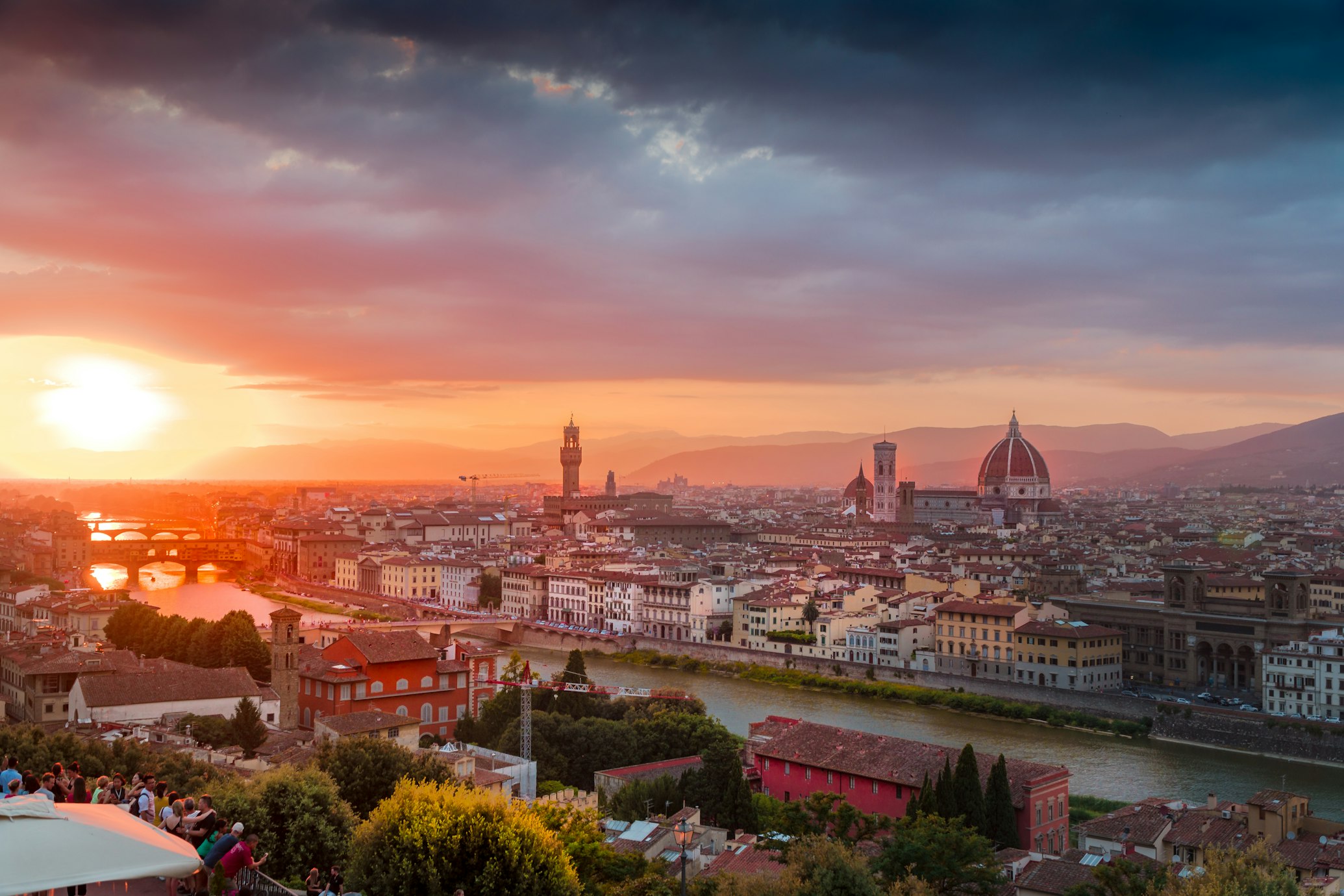Florence

Florence, the cradle of the Renaissance, is a city that has profoundly influenced the artistic, cultural, and political landscape of Europe and beyond. Nestled in the heart of Italy’s Tuscany region, this enchanting city is celebrated for its unparalleled contributions to art, architecture, and science. With its compact size and pedestrian-friendly streets, Florence offers an intimate and immersive experience, inviting visitors to explore its treasures at their own pace.
The historic center of Florence, a UNESCO World Heritage site, is a testament to the city’s architectural and artistic achievements. The Duomo, formally known as the Cathedral of Santa Maria del Fiore, dominates the city’s skyline with its magnificent red-tiled dome engineered by Filippo Brunelleschi. This architectural marvel, along with its adjacent bell tower by Giotto and the Baptistery with its renowned bronze doors, represents the harmony and innovation of Renaissance design.
The Uffizi Gallery, one of the world’s foremost art museums, houses an incomparable collection of Italian Renaissance art, including masterpieces by Leonardo da Vinci, Michelangelo, Botticelli, and Caravaggio. Similarly, the Accademia Gallery is home to Michelangelo’s David, a symbol of Florence and a masterpiece of Renaissance sculpture that captures the human form and spirit with breathtaking precision.
Florence’s influence extends beyond its museums and galleries. The Palazzo Vecchio, the city’s town hall, and the Pitti Palace, with its Boboli Gardens, offer insights into the life of the Medici family, who were patrons of the arts and rulers of Florence during its golden age. These historic sites, along with the countless churches and chapels adorned with works by Donatello, Masaccio, and Ghirlandaio, weave a rich narrative of Florence’s role as a center of power, spirituality, and creativity.
The city’s historic bridges, particularly the Ponte Vecchio, with its jewelry shops and picturesque views over the Arno River, add to the romantic and timeless appeal of Florence. The surrounding hills, dotted with olive groves, vineyards, and charming villas, provide a scenic backdrop and an invitation to explore the Tuscan countryside.
Florence’s culinary traditions are deeply rooted in the Tuscan landscape, emphasizing simplicity, quality, and seasonal ingredients. Local specialties such as ribollita, a hearty vegetable soup, and bistecca alla fiorentina, a T-bone steak cooked over an open fire, showcase the region’s agricultural bounty. The city’s markets, such as the Mercato Centrale, offer a vibrant array of fresh produce, cheeses, meats, and artisanal products, reflecting the importance of food and wine in Tuscan culture.
The enduring legacy of the Renaissance in Florence is not only found in its art and architecture but also in its spirit of innovation and inquiry. The city continues to inspire and attract artists, scholars, and travelers who seek to experience the beauty and wisdom of a bygone era that forever changed the world.
In conclusion, Florence is a living museum that offers a profound connection to the past, celebrating human achievement and beauty in every stone, painting, and piazza. It is a city that must be experienced firsthand, with each visit unveiling new layers of history, artistry, and tradition that make Florence an eternal wellspring of inspiration.